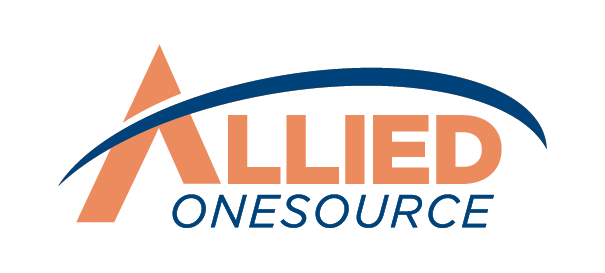Why Pre-Hiring in December Gives You a Head Start on Next Year’s Roles
Many companies assume hiring in December is impractical. You've probably heard these reasons or thought them yourself:
- "Everyone's checked out for the holidays,"
- "Candidates aren't looking right now," "
- We'll start fresh in January."
But waiting until January to fill Q1 roles means you're looking at 6-8 weeks before new hires actually start, factoring in interviews, offers, and notice periods. That puts you understaffed through February, possibly March, right when demand is highest.
Pre-hiring for next year changes that timeline entirely. When you hire in December for January start dates, your team begins the year fully staffed and productive from day one. You also get first access to quality candidates who are actively planning career moves around the new year, and you're working with newly approved budgets that can immediately translate into headcount.
The early recruitment benefits aren't just about timing, they're about starting Q1 ahead instead of spending it catching up.
Common Myths About December Hiring
The hesitation around December hiring comes from outdated assumptions about how both candidates and businesses operate during the holidays.
Read More: How Q4 Hiring Delays Impact Productivity and Profit
Myth 1: "Nobody's Looking for Jobs in December"
Serious professionals plan career transitions around the calendar year. December is when they've received year-end bonuses, completed reviews, and decided it's time for a change. They want their next role secured before the holidays end. While you assume candidates have checked out, they're actively applying and interviewing, often using PTO for job searches. The talent you need is looking now.
Myth 2: "It's Too Close to Budget Cycles to Hire"
December is perfectly aligned with budget cycles, not too close to them. Most organizations finalize budgets in November and December, meaning headcount is confirmed right when you should be hiring.
Waiting until January means you have budget approval but empty seats, burning weeks of productivity while you fill roles. December hiring translates your newly approved budget into a fully staffed team on January 2nd.
Myth 3: "Holiday Schedules Make Hiring Impossible"
Holiday schedules work in your favor. Candidates use December PTO for interviews, and your teams have bandwidth during slower periods to make hiring decisions. The biggest advantage: less competition. While other employers are on holiday autopilot, you're capturing quality talent before the January hiring frenzy.
The Advantages of December Pre-Hiring
When you hire in December for January starts, you're solving multiple Q1 challenges at once. Here’s how:
Read More: 2026 Hiring Trends: What's Ahead for Industrial & Admin Jobs
Eliminate Q1 Downtime and Productivity Gaps
Post a job in early January, and you're looking at interviews through mid-January, offers by late January, then two weeks' notice. Your new hire starts in mid-February at the earliest. That's 6-8 weeks of lost productivity during your busiest quarter. December pre-hiring changes this; employees start January 2nd and hit full productivity by mid-month, right when Q1 demands peak.
Win the Competition for Top Talent
December gives you first access to quality candidates before the market floods with competition. According to a study by Deloitte, 1.9 million manufacturing jobs could go unfilled over the next 10 years if talent challenges aren't addressed.¹
Additionally, the Bureau of Labor Statistics (BLS) found that retail trade alone saw job openings spike by 190,000 positions from May to June 2025.² These numbers show how quickly talent gaps compound when employers delay hiring. While competitors wait until January, you've already secured your strongest candidates.
Maximize Onboarding Quality
Training during December's slower pace beats rushing to onboard during February's peak demand. Your current employees have bandwidth to mentor new hires properly and ensure cultural integration before crunch time hits.
Better onboarding directly impacts 90-day retention. By the time Q1 pressures arrive, your new hires are already integrated team members, not overwhelmed newcomers learning on the fly.
Your December Pre-Hiring Timeline
Here's what December pre-hiring looks like in practice when you're targeting January start dates.
- Early December (Week 1-2): Finalize your Q1 role requirements and headcount needs. Launch job postings that clearly state January start dates. If you're working with a staffing partner, this is when their existing candidate pipelines become invaluable; you're not building from scratch.
- Mid-December (Week 2-3): Conduct interviews while candidates are available and motivated. Many use PTO specifically for job searching during this window. Extend offers with clear January start expectations and begin background checks and paperwork immediately.
- Late December (Week 3-4): Complete pre-employment requirements and prepare onboarding materials. Coordinate with your teams to set up training schedules for early January. This administrative work happens during your slowest operational period, not during the chaos of late January or February.
- Early January: New hires start January 2nd, complete onboarding during the first week, and reach full productivity by mid-month, exactly when Q1 demands hit their peak.
This compressed timeline only works when you start in December. Wait until January to begin hiring, and you could be looking at empty seats until March.
Read More: Hiring for the Future: How AI and Predictive Analytics Are Changing Workforce Planning
Start Q1 Ahead of the Competition with Allied OneSource
Allied OneSource maintains year-round candidate pipelines across light industrial, administrative, and skilled trades, which means you're not starting from scratch in December.
We understand sector-specific Q1 demands and have the placement capabilities to align with your December-to-January timeline. While other companies wait until January and spend weeks recruiting, you can start the new year with a complete, productive team.
Contact us today to discuss your Q1 staffing needs, or download our Salary Guide for comprehensive insights into 2026 workforce planning strategies and emerging hiring trends.
References
1. Coykendall, John, Kate Hardin, John Morehouse, and Steve Shepley. “2025 Manufacturing Industry Outlook.” Deloitte Research Center for Energy & Industrials, 20 Nov. 2024, https://www.deloitte.com/us/en/insights/industry/manufacturing-industrial-products/manufacturing-industry-outlook.html.
2. Employment Projections: 2024–2034 Summary.” Bureau of Labor Statistics, U.S. Department of Labor, 28 Aug. 2025, https://www.bls.gov/news.release/ecopro.nr0.htm.











